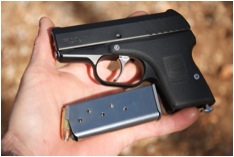MoJo, I agree with most of your post, except for the highlighted area.
The vaunted ruggedness of the revolver vs. a military grade semiauto like a Glock or Springfield XD is actually an old myth that was frequently called on to forestall the inevitable move from revolvers to semiautos in police agencies. Revolvers have lots of things that can and do go wrong, as those of us who have seen a lot of LEO training before semiautos took over can attest.
Dropping a revolver one time on a hard surface has an excellent chance of rearranging the very delicate relationships between the crane, the cylinder, and the barrel. Disruptions in these areas can cause the gun to shave and spit lead sideways when fired because the chambers don't line up exactly with the barrel, or, in severe cases, can cause the cylinder not to turn at all. These are gunsmith fix items.
If you don't watch the screw that secures the crane to the frame, you may open the cylinder for a reload only to watch your cylinder and crane assembly fall out of the gun and onto the ground. Heavy bullets in ultralight revolvers can work the projectiles of loaded rounds out of the cartridge cases as the first couple of rounds are fired, preventing the cylinder from rotating and totally tying up the gun. Revolvers are also very susceptible to sand or mud which gets into the fairly delicate internal moving parts pretty easily and brings all those precisely mated moving parts to a grinding halt. That's why you don't see revolvers in the holsters of the world's premier military forces.
They're also not quick or easy to clean. Six chambers and one barrel take lots longer to clean properly than a single chamber / barrel unit, even when the semiauto's slide and frame cleaning is taken into account. I clean a semiauto in about 20 minutes. To get my revolvers to meet my standards takes 45 minutes to an hour. I may be pickier than most, but I'm that way with the semiautos too.
Semiautos do have a more complicated manual of arms, and require more hand strength, manual dexterity, shooter knowledge and training to operate successfully and reliably. Many officers who were not "gun guys" struggled mightily during the transition to semiautos. However, the better examples are far more rugged than revolvers. I don't know of any revolver that could be dropped from a helicopter a few hundred feet up, or buried it in mud, sand, or ice, dug out, and would then fire a full cartridge load successfully like you can do with a Glock. I'd have to do some detailed counts to determine if a Glock or an S&W Model 642 has more parts that move during the firing cycle, but I see that as a neither here nor there item.
The bottom line, as you pointed out, is that each gun type has its pluses and minuses. Neither is perfect. One needs to make informed choices based on his or her own needs and a solid knowledge of the actual characteristics to determine what fits best for any given situation.[/quote]
Excellent post, some info I had never heard of before with revolvers, thanks.
They're just so hard to come by these days. (I was going to put a link to the S&W website for it, but their website is so mind-bogglingly horrid and slow. Heck, I can't even tell if S&W makes them anymore).



